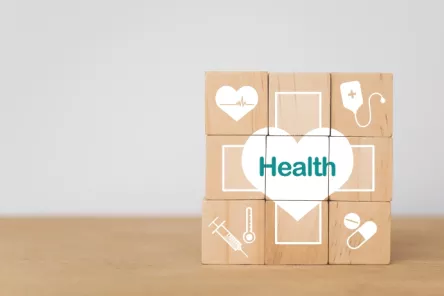In-Depth
View all In-depth content

Preamble:
This article is a reflection and insight into pharmacy leadership and management on the reservation as a real-life case study. It is the fourth of a series of articles. Fictitious names are used to preserve and respect the identity of the facility, and the people involved.
This article focuses on strategies to overcome challenges faced by a Director of Pharmacy on the reservation described in article three. These strategies can be executed in similar situations anywhere across the country and in any pharmacy setting.
Challenge 1: Establishing a New Service Line - Home Infusion
Strategy:
- Continuously advocate and find solutions to roadblocks presented by the C-Suite from credible sources and draw from previous experiences.
- Build allies with other leaders, which starts by building relationships from day one and delivering results consistently to trust as the subject matter expert, leadership and project management capabilities
Outcomes: Barriers and negative attitudes were broken down with justifications and persistent efforts. I led the project, drew out the workflow, and picked up the project where my predecessor had given up.
Challenge 2: Building a New Pharmacy
Strategy: Building a new pharmacy requires check-ins and follow-ups with the Chief Operating Officer who manages the project. Establish a relationship with the C-Suite similar to the above with other leaders. Plan and prepare ahead for regulatory body approvals, drawing on your previous experience, and assist them with the design of a new build-out and project timeline. Pharmacy usually needs to be built out early and first due to regulations and infrastructure setup. Share experiences humbly, providing references where possible.
Outcomes: Progress was made with the design, layout, and equipment required of the pharmacy during my tenure there. Education was provided on next step needs in a chronological manner with regulatory bodies prior to my departure.
Challenge 3: Inconsistency of Pharmacist Skills, Experiences, and Knowledge
Strategy: I reviewed the training gaps on both the inpatient and outpatient sides by delegating to my assistant directors inpatient and outpatient and vetting through the materials comparing to industry standards (ASHP, USP <797, 800> standards), other references and experience. All new pharmacists were trained on both inpatient and outpatient starting with outpatient first as they build their skill sets and depends on how long they would stay with the organization. Trainers were carefully selected and paired up based on a match of style also to ensure best delivery of the materials. Regular check ins by leadership would occur to ensure they’re on track and provide feedback on support needed.
Outcomes: Consistency of performance, expectations, staff satisfaction, and morale all improved. It was also less challenging to ensure accountability since everyone is now consistent with their training.
Challenge 4: Accountability
Strategy:
- New training was developed to assist with setting expectations at a consistent level.
- Almost daily or twice daily rounding (sometimes) by the Director of Pharmacy and check-ins on staff both professionally and personally was appreciated and improved morale – especially during the first few months of establishing rapport, trust, credibility, and support.
- Recognize staff at daily huddles, at staff meetings, and in front of senior leaders.
- Held staff accountable by working with HR to investigate and understand different sides of the stories before disciplinary action occurs.
- Lead leaders to understand coaching and progressive disciplinary process to ensure they are accountable.
- Coach, mentor, and train leaders to adapt to their style and needs weekly and monitor their growth. Provide timely feedback as well as compliment them on their achievements and progress.
- Have weekly meetings with leaders providing a safe psychological space where staff can speak their mind.
- Develop a Just Culture and give staff grace. Not every mistake is punitive unless it is repetitive after coaching.
Outcomes:
- Improved morale and overall positive culture within the department.
- Improved perception of the department across the organization.
- Performance improved but continued monitoring is required and continues to be a challenge with leaders stepping into staffing roles due to staff shortage.
Challenge 5: Work Cultural Issue and Lacking Just Culture
Strategy:
- Develop a Just Culture using lean Six Sigma methodology, root cause analysis, and various other tools through a multicampus-wide initiative, and results were presented to the C-Suite. The Director of Pharmacy shared the vision with the team and sought their feedback and support collaboratively as a team.
- Work with the Chief Nursing Officer and Chief Medical Officer to help them develop a Just Culture among their teams using data, an educational, collaborative, and supportive approach.
Outcomes:
- Just Culture was established, and reporting of medication errors increased by 500% at one site (pharmacy).
- The pharmacy’s reputation was rebuilt among the C-suite and Board of Directors, moving towards a non-blame culture and more collaborative process improvement culture.
- Other clinicians were held accountable by the Chief Nursing Officer and Chief Medical Officer, starting with education first before disciplinary action. The goal was nonpunitive and education-first.
Challenge 6: Network Infrastructure was Challenged
Strategy:
- Participated in a root cause analysis and presented solutions from experience at other facilities.
- The pharmacy revised the downtime plan and the tools and process improvements.
Outcomes:
- Tools and resources within the pharmacy department were better developed.
- Workflow was improved for future recurrence within the pharmacy department, but some issues, such as IT-related issues, were outside of the pharmacy’s scope of control.
Challenge 7: Lack of Inpatient Metrics and Standard Industry Pharmacy Programs
Strategy:
- Metrics were introduced through teamwork among the leadership team where the Director of Pharmacy would delegate, trust, and verify. Clinical metrics were developed and monitored by enforcing clinical interventions and documentation. The Director provided coaching and mentorship along the way.
- Other metrics and programs were developed and monitored, including inpatient productivity; diversion monitoring; metrics and investigations on opioid stewardship; drug scanning compliance; clinical interventions by pharmacy; antimicrobial stewardship; clinical cost-saving initiatives; and a revamp of the medication error process improvements by introducing a Just Culture.
Outcomes:
- Results were provided on monthly reports in line with industry standards.
- The C-Suite was pleased with the changes implemented and improved pharmacy services by setting a standard, reinforcing and monitoring improvements month over month.
- Pharmacy gained more respect from senior leadership due to the value we bring to safe, timely, and effective patient care backup by measured data (metrics).
Challenge 8: Recruitment and Staffing Challenges Lead to Burnout of the Pharmacy Leadership Team
Strategy:
- Contractors and agency staff were the norm for this pharmacy operation. Thus, working with multiple vendors and keeping a non-judgmental open mind, some traveler pharmacists were actually high performers once onsite and would often stay for multiple renewals of their contract. By rebuilding a positive work culture, some contractor staff converted to permanent staff which was a win-win overall.
- It is important to note that traveler pharmacists may have different approaches or be at a different stage in their career than permanent staff. When interviewing, be fair and assess the person as they are. Avoid judgements against employment gaps or new graduates as long as the candidate can adequately justify. It’s important to be compassionate and give people a chance if they have the right mentality, attitude, ethics, and morals. Skills and competency are qualities you can train.
Outcomes:
- Interviews were frequent but this is how we kept the department going. A long-term solution of permanent staff is challenging due to the rural location and housing. The Director of Pharmacy was resilient and persistent, which set the tone for the rest of the pharmacy leadership team in recruitment.
- Providing candidates with an opportunity resulted in some candidates staying onboard as permanent staff and moving up within the department over time.
- Some traveler candidates took on more responsibilities such as transitioning to help with inpatient and was able to staff both outpatient and inpatient. This is rare in the industry: a pharmacist working in both roles at one health-system.
Challenge 9: Restructuring and Reorganizing
Strategy: Some roles were not aligned with industry standards around changing regulatory needs, such as an IV Compounding Supervisor, due to the changes in Sterile Compounding chapter USP <797> within recent years. Other roles were not clearly defined so they were changed to give the department more frontline staff help. Given that there were no further full-time employees allocated in the budget, the restructuring of certain roles had to create new roles to make the organization in line with other renowned health-care systems that the Director of Pharmacy had worked at. The remaining challenge then moves to the next stage of recruitment or promotion from within, necessitating training, mentoring, and coaching.
Outcomes:
- Some staff were promoted from within, then mentored and coached, which improved their job satisfaction, especially among technicians where some felt there was no way to move up.
- Ongoing recruitment efforts and positive results for other roles occurred (refer to the recruitment and staffing section of this article).
Challenge 10: Inspiring, Motivating, and Engaging Staff
Combatting the "We've Always Done It This Way" mentality
Strategy:
- It was essential for success upon starting the role that the Director of Pharmacy leadership shared her vision, her leadership style, and her purpose (present to help); she explained changes with the "why" behind them and sought buy-in when possible; she empowered staff to speak up and do more beyond their responsibilities; she reminded staff of the Oath of a Pharmacy, and that working as a pharmacist or a pharmacy technician is a privilege – not a right – combined with maintaining an open door policy.
- It takes a certain personality and leadership style (with traits such as being adaptable, flexible, compassionate, humble, frequently self-reflecting, transformational, empowering, personable, active listener, highly accountable) to lead a dynamic team when nearly half of your department is staffed with contractors, and you must restart with new contractors who are there for short terms and are more financially incentivized. It’s an ongoing effort daily requiring positive energy and resilience. Even when the Director of Pharmacy has her own personal challenges, they need to be left at home. One must stay strong for their staff as they will mirror you and lean on you for support.
- An emphasis on listening to staff feedback and having the patience to explain in multiple different ways that the industry is evolving and that being stagnant means falling behind, as well as being previously not cited, which doesn’t make it right or mean that citation cannot happen in the future.
Outcomes:
- Trust, respect, and support were felt by the staff quickly within the first full week. Resultantly, senior leadership and pharmacy staff, as well as others within the health system, co-operated and supported the Director of Pharmacy's subsequent projects and initiatives.
- The Director of Pharmacy was asked by many staff, leaders, and the executive leadership to stay on board permanently or at least for several years due to the overall revamp of the Department of Pharmacy in all aspects. Unfortunately, due to the location and family reasons, the Director of Pharmacy could not stay beyond her committed year, but had set up the department for success in multiple ways and still keep in touch with the organization leadership when needed, providing advice on a pro-bono basis.
Challenge 11: Pharmacy Software
Strategy: As part of the Lean Six Sigma process improvement project, new software that is more in line with regulatory requirements and improved efficiency was needed. The Director of Pharmacy led the project in vetting several current trending software applications on the outpatient side through site visits and anecdotes, meetings with vendors, and involving other subject matter experts internally to help vet out the best vendor.
Outcomes: The Director of Pharmacy had pinpointed the point of failure, set up a structure, and handed it off to the leadership team to complete the project as she had completed her committed tenure and returned home to her family and other work engagements.
Conclusion: Overall, the challenges, strategies, and outcomes of this health system mentioned in this series were not limited to just what was referenced. These were some major highlights that could be helpful to pharmacy leaders overall.
For further information or questions, the author can be contacted via statrxllc@outlook.com. Thank you.

Preamble:
This article is a reflection and insight into pharmacy leadership and management on the reservation as a real-life case study. It is the third of a series of articles. Fictitious names are used to preserve and respect the identity of the facility, and the people involved.

Preamble:
This article is a reflection and insight into pharmacy leadership and management on the reservation as a real-life case study. It is the second of a series of articles. Fictitious names are used to preserve and respect the identity of the facility, and the people involved.

Preamble:
This article is a reflection and insight into pharmacy leadership and management on the reservation as a real-life case study. It is the first of a series of articles. Fictitious names are used to preserve and respect the identity of the facility, and the people involved.
An Introduction: What is an Indian Reservation?
VIDEOS
VIEW ALL VIDEOS
Terry Terify, the Chief Commercial Officer of Azurity Pharmaceuticals, shares insights about the company's mission to serve overlooked patient populations. With nearly three decades of experience in the pharmaceutical industry, Terry highlights Azurity's focus on developing dosage formulations for pediatric, adult, and geriatric patients with unmet needs. The company boasts a diverse portfolio of 22 promoted products across six therapeutic categories, including oncology and cardiovascular. Azurity aims to expand its offerings significantly, particularly in oncology and CNS, while emphasizing the importance of collaboration with healthcare professionals.
Valerie Hoffman is the Associate Marketing Director at Long Grove Pharmaceuticals. Valerie prioritizes drug safety and aims to enhance it through clear, distinctive labeling. She also emphasizes open communication in leadership and works to build strong customer relationships.
Mark Saxon, the CEO of Safecor Health, discusses the company's strategic plans for 2025, emphasizing their commitment to unit dose drug repackaging and error-free medication delivery. Mark highlights the importance of cultural change and core values such as care, commitment, and excellence in leadership. He expresses excitement about tackling healthcare challenges, cherishes family traditions, and is looking forward to a successful 2025.